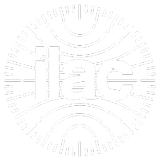Inspection News
Understanding Non-Destructive Testing (NDT) in Quality Control
Testing materials, components, and systems is a crucial process that needs to be done without causing any damage or alteration to the tested item. This method is called Non-Destructive Testing (NDT). It plays a vital role in quality control by ensuring the safety, reliability, and quality of products and structures. In this article, we will delve deeper into NDT and learn how it can benefit your business.
What is NDT?
NDT is a widely utilized method in aerospace, automotive, construction, and manufacturing industries. Its purpose is to detect defects, flaws, and other imperfections that could affect the integrity and performance of materials and components. While it is generally true that NDT does not cause any damage or alteration to the tested item, it’s worth noting that some methods may cause minor damage or alteration, such as surface etching, staining, or magnetization.
Why is NDT important in quality control?
NDT is a crucial part of quality control as it helps to identify defects, flaws, and other imperfections that may compromise the performance and integrity of materials and components. Using NDT, engineers and technicians can detect potential problems early on and take corrective actions before they become more serious.
Common NDT methods and their applications
Various NDT methods can be used depending on the type of material or component being tested. Some common NDT methods include visual inspection, ultrasonic testing, radiography, eddy current testing, and magnetic particle inspection.
- Visual inspection is the simplest and most basic NDT method and involves visually examining the material or component.
- Ultrasonic testing uses high-frequency sound waves to detect internal defects and flaws.
- Radiography, also known as X-ray testing, is used to detect cracks, corrosion, and other internal defects.
- Eddy current testing is used to detect surface and near-surface defects.
- Magnetic particle inspection is used to detect surface cracks and defects in ferromagnetic materials.
Common questions about NDT
What are the advantages of NDT?
NDT is a non-destructive process, meaning it does not cause any damage or alteration to the tested item. This makes it a safer and more cost-effective testing method compared to destructive testing.
Is NDT a reliable testing method?
Yes, NDT is a reliable testing method when performed by qualified and experienced technicians. It is widely used in various industries and has proven effective in detecting defects, flaws, and other imperfections.
What industries use NDT?
NDT is used in various industries, including aerospace, automotive, construction, and manufacturing. It ensures the safety and reliability of products, structures, and systems.
Conclusion: Understanding Non-Destructive Testing (NDT) in Quality Control
In conclusion, Non-Destructive Testing (NDT) is a crucial quality control process that helps ensure the safety, reliability, and quality of products and structures. By understanding the meaning and importance of NDT, engineers, and technicians can make informed decisions and take appropriate actions to prevent failures and ensure the highest quality of products and services.











